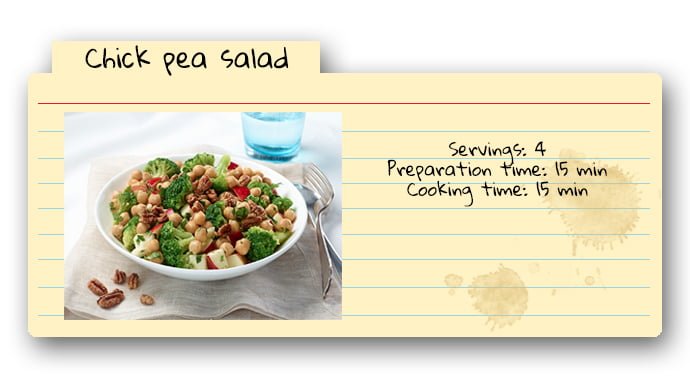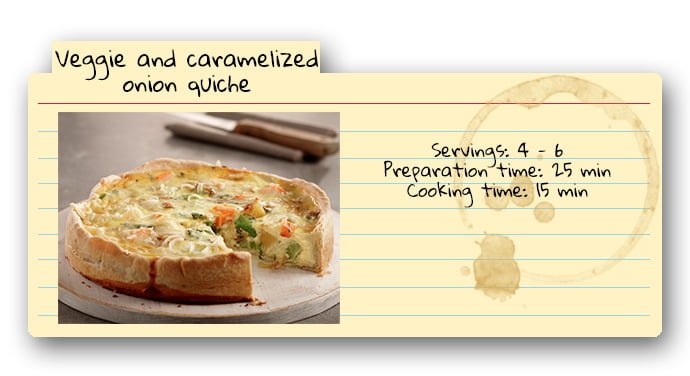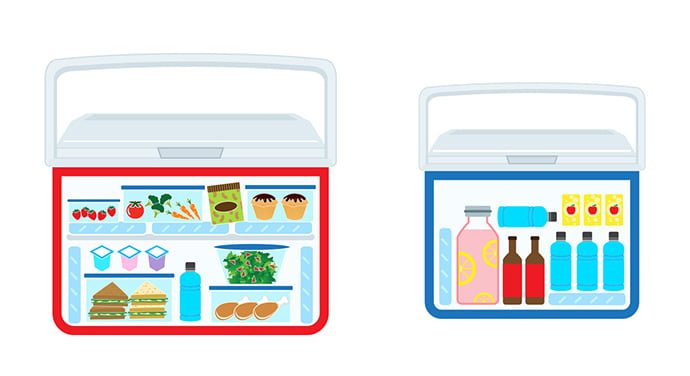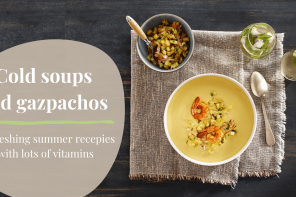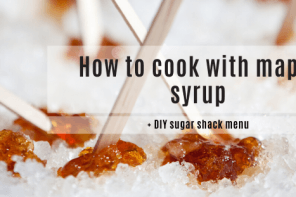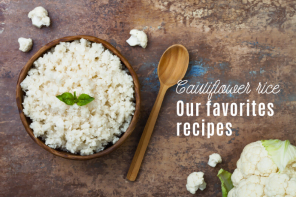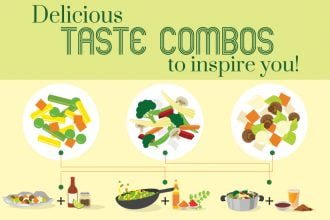The Essential Guide to a successful picnic
You know, kids don’t always like the idea of going on a picnic, but for many families and even couples, this outdoor activity is on the list of things to do in the summer. It’s a real happy moment to break the eating routine and escape to eat in nature. Ignore table manners, kids playing between meals, sitting cross-legged and eating with your hands.
Regardless of where you live, your little corner of the country is certainly full of green spaces and places to discover! Escape the daily grind, unplug your gadgets and practice the art of picnicking!
Picnicking: where does this strange expression come from?
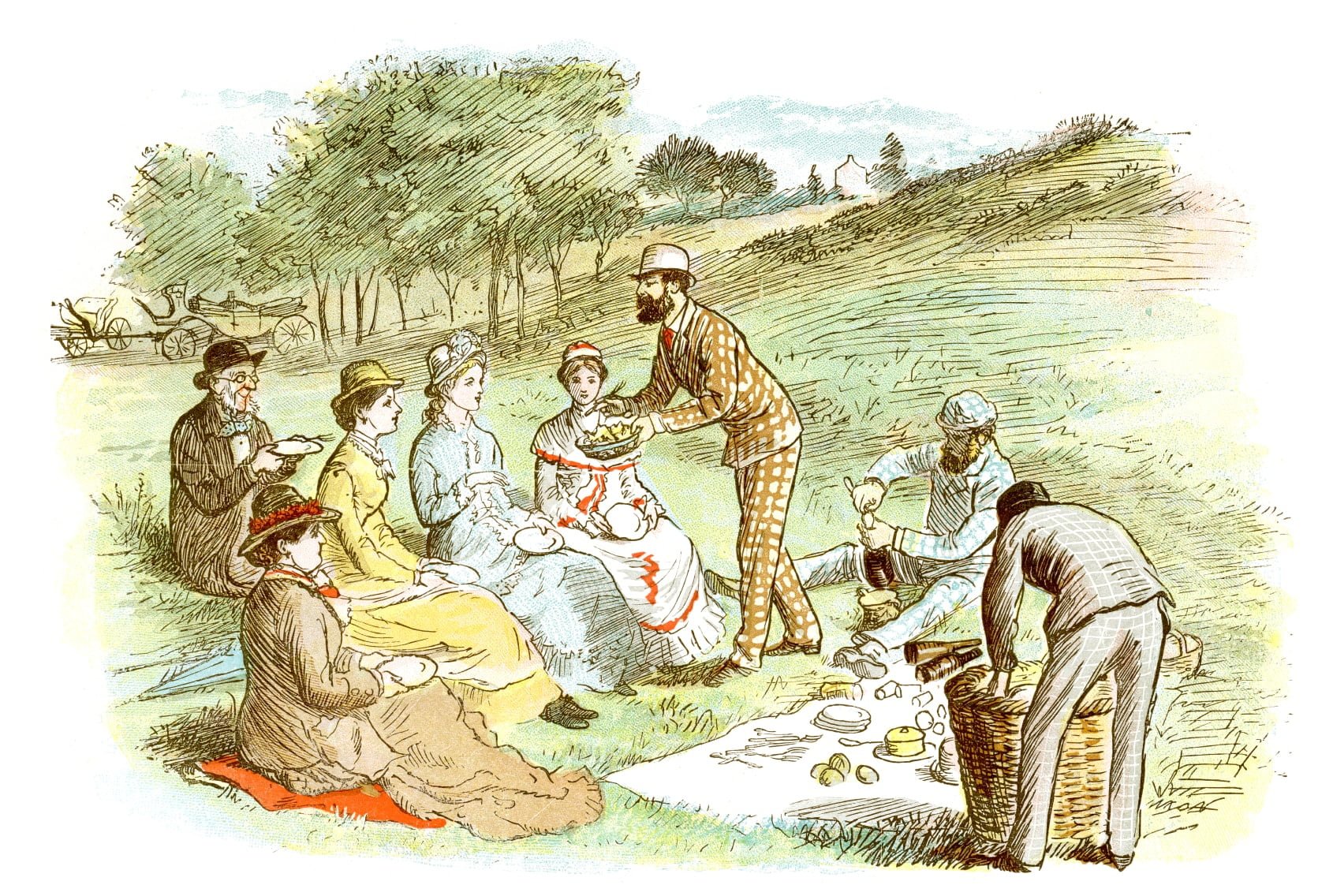 It was the simplicity of eating on grass that the art of picnicking was invented. It grew in the era when shepherds, dairymen and cow herders fed themselves bread and cheese right in the middle of their herds. At that time, picnics were associated with working in the fields more than leisurely summer activities. Poor farmers back then took breaks by having a little breakfast that consisted of “little nothings”, or “nics” a term referring to things of little value or some change in their pockets. Some also think that picnics came from a meal taken in the Frenchvillage called Pique-Nique.
It was the simplicity of eating on grass that the art of picnicking was invented. It grew in the era when shepherds, dairymen and cow herders fed themselves bread and cheese right in the middle of their herds. At that time, picnics were associated with working in the fields more than leisurely summer activities. Poor farmers back then took breaks by having a little breakfast that consisted of “little nothings”, or “nics” a term referring to things of little value or some change in their pockets. Some also think that picnics came from a meal taken in the Frenchvillage called Pique-Nique.
In the Middle Ages, the same word was also used to talk about a meal that was eaten outside without a table. Picnics in the fields with nobles, while hunting, etc.
In the 18th century, the word became popular and appears for the first time in the Dictionnaire de l’Académie française, the first official dictionary of the French language. It was defined as a meal where each guest brought a dish or paid for their share. So people said that they were making a “picnic meal” or “dining picnic-style” and shared the feast between them. At the time, it was a way to share the cost of a meal. The expression came from the French verb “piquer” which means pick or peck and “nique” which means a meal where each person picked from a plate for their money. Picnicking means either eating together at someone’s house or at home, outside or inside, but not necessarily outdoors.
Towards the end of the 19th century, this expression was obsolete and became the one we know today “having a picnic”. From this time, we recognize a picnic as a meal enjoyed outside while on a trip, on an excursion, etc. It has a more symbolic value. Now it’s a moment of pleasure and a leisure destination more than sharing the cost of a meal. This new trend is in line with the growth of the means of transportation and the desire to get out for a picnic.
Term of French origin, the word picnic was adopted into English in 1748 and into German in 1753 as picknick. Today, it’s accepted by everyone and the activity has become a true universal practice. In fact, it’s more than a simple checkered tablecloth on a table. We participate now in the revolution of the traditional picnic: a ton of practical accessories, recipes specifically for picnics, picnic themes and a lot of things to complement your snack bar in the great outdoors!
Now, let’s set the history lesson aside and prepare for the best picnic of the summer!
The destination

Before preparing anything, it’s important to know where you’ll be picnicking. This will help you determine the menu and essentials you’ll need for the day. Often, we’ll want to find the perfect corner when really, a great picnic translates into moments we share with family around great food. Isn’t that the idea?
There are no limits to where you can have a picnic. Whether it’s in your backyard, along the shoreline of a lake, at the park or in the mountains, your kids will delight in the simple idea of eating on the ground. In case of rain, improvise and have a picnic in the living room!
Here is a table of the main spots for picnicking, as well as their advantages and inconveniences.
| Places | Advantages | Inconveniences |
| At the beach or on the lake |
|
|
| On the mountain |
|
|
| At the park |
|
|
Think about your equipment
Once you’ve decided where, you can better identify what you’ll need. Will you be eating at a table in the park? On a blanket on the beach? Bringing your own foldable table? These are just some of the things to ask yourself before loading up the car!
As picnics are often done on the grass, we’ll tell you about two kinds of perfect picnic blankets. We really like the ones at Avenue Coloniale. They’re waterproof and come with straps for easy transport. The vibrant blanket at Bed Bath & Beyond will protect you from wetness and is super cute.
Eating well: ingredients for a successful picnic
When we go outside to eat, it can seem easier to stop at the corner grocery store to pick up a few ice cream sandwiches, salads and store-bought cookies. On the other hand, it’s more pleasant to create your own homemade picnic that will satisfy your momentary cravings. Nothing is more revitalizing than eating healthy in the great outdoors!
For a balanced picnic menu, integrate items from the 4 food groups, meaning: grains, dairy products, meats and substitutes, fruit and let’s not forget vegetables!
Show off your originality and forget about the traditional ham sandwich. Reinvent the contents of your picnic basket! There is a variety of fun recipes to bring. Whether it’s a salad, a super sandwich or a cold soup, the possibilities for creating an original menu are huge. As well, get your kids involved in the meal preparation. They’ll be proud the minute the cooler is opened!
It’s better to bring too much than not enough. Ideally, you want people to be able to nibble as they like all day long. For a family picnic, visualize foods that can be eaten with your hands. They’re easier to enjoy.
When thinking picnic, also think practical. It’s useless to bring everything but the kitchen sink to recreate your kitchen on a lakeshore. The idea behind a great feast on the grass is to improvise! In the outdoors, we get out of our comfort zone and show our adventurous side!
So we propose 4 kinds of picnic menus created with care for a succulent outdoor meal that responds to food safety criteria. It may seem easy to plan a tasting, but again, preparing with care to avoid spreading bacteria is a must. It’s with this in mind that our meal suggestions exclude cold cuts and have little or no mayonnaise (we’ve chosen oil-based recipes and heat-resistant condiments). We’ve eliminated anti-picnic food as much as possible!
The early bird picnic
Don’t reserve your next Sunday brunch at a restaurant. Instead give yourself a good outdoor breakfast to start the day on the right foot. Then you can use the rest of the day to do activities on a full stomach 🙂
Here are a few suggestions for a nourishing and easy-to-bring breakfast:
Fresh fruit
Yoghurt with granola
Banana Sushi
Overnight oatmeal
Cereal, your choice
Banana vegetable bread
French toast kabobs
Cinnamon brioches, chocolatines (chocolate bread) or croissants
Breakfast burrito
Almond butter and strawberry crepe wraps
Nutella or peanut butter breakfast wraps
Mini quiches to go
The family picnic
Unifying, friendly and fun, picnics are a family history, a genuine way of life. Think about the time you went on a picnic for the first time. It must have been with your parents, your family… Classics like broccoli salad, macaroni and little cheese sandwiches surely graced the checkered tablecloth. Today, we make room for more contemporary dishes and we create recipes that are as original as they are tempting. But, just between us, we know we’ll never forget those classics.
For a family menu, couscous salad, pasta and quinoa make excellent and nourishing meals. For added protein, add legumes, cold chicken or hardboiled eggs to them. Sandwiches, wraps and croissants are also options that aren’t too fancy. Try quiches or little pizzas because they’re exquisite even cold!
Also think about cooking meals that are easy to eat when you’re sitting on the ground without utensils.
Ask you kids what they’d like to eat so they’ll enjoy the feast even more. They’re sure to give you excellent ideas.
Here are a few suggestions for the perfect classic recipes for a family picnic.
California quinoa salad
Creamy macaroni salad – a must for any picnic!
The veggie picnic
If you don’t eat meat or would prefer a vegetarian menu for a change, there are many great recipes that you just can’t pass up even once you’re home.
Here are a few meatless suggestions:
Picnic for two
If you’re looking for a romantic escapade, nothing would be better than a tête-à-tête to break the routine. Less expensive than dinner at a restaurant, picnics guarantee happiness and lightness! Grab the checkered tablecloth and break out the bottle of wine to maximize your little moment for two.
Here are a few easy-to-prepare delicious recipe suggestions to enjoy during your lovers getaway:
Three melon summer salad
Veggie and caramelized onion quiche
Gazpacho
Mozza crab salad sandwiches
Your choice of cheeses and terrines
Bottle of wine
Smoked salmon spread
Cherry tomato, Bocconcini and basil skewers
For your sweet tooth
A picnic without sweets? Don’t even think about it! Picnics often conjure up vacations and fun, so dessert is a necessity for kids and parents alike. Not only that, but these treats will complete the magic of your feast. On the other hand, you’ll need simple little treats that are easily transported and eaten with your hands!
Here is a selection of recipes that will satisfy your sweet tooth:
Smart snacks
For snacks, choose fruit that can be eaten easily with your hands like apple slices, oranges, grapes and strawberries. Avoid bringing small, delicate fruit that can often get damaged in the box, like bananas, peaches and apricots.
Do you know a trick so that apples don’t brown when they’ve been cut? Once cut, just put an elastic around the apple slices.
Another original idea is to put popsicle sticks into watermelon triangles. A great treat that’s like eating a real popsicle, but healthier!
Popcorn is also a delicious and easy-to-eat snack. Just pop it the night before and serve it in a bowl when the time comes
And let’s not forget raw veggies, cubed cheese, crackers, pita chips with salsa and hummus. They’re always a hit!
Drinks
It’s important to pack drinks because hot days make us thirsty! As well as juice boxes, there’s a funner way to quench your thirst in nature. Of course, you’ll bring lots of water because besides keeping you hydrated, you can rinse sticky, little hands and clean up messes. To ensure that water stays nice and cold, fill up reusable bottles a quarter way up and freeze them. They next day, fill the rest up with fresh water.
Make a good homemade lemonade the night before and pour into hermetically-sealed containers like mason jars.
Little tip: avoid bringing pop because they’ll lose their fizziness with the heat. Plus, they attract bugs. You’ll definitely not want that kind of visitor at your outdoor feast!
10 foods not to bring to a picnic

Before planning your menu, make good choices to avoid food disasters. Whether it’s a question of safety or mess, there are some foods that are better left at home.
Ice cream
Bring frozen yoghurt fruit tubes or go to the ice cream counter if there is one near your picnic destination.
Soft, delicate fruit (bananas, peaches, etc.)
We suggest you to bring apples, oranges, watermelon and other fruit that don’t ripen too quickly in the heat.
Dried fruit is another good alternative.
Hard cheeses (Cheddar)
Choose brie, Camembert or goat cheese. These won’t get oily in the heat. Otherwise, you can still enjoy spreadable cheese stored in a container.
Mayonnaise
This sauce is prone to bacteria growth if not maintained at a temperature of 4.4° C. Even in a nice, cold cooler, you can never be sure if it’s fresh. Better safe than sorry!
Choose oil-based salad dressings or vinegars, mustard sauces, nut butter, hummus, etc.
Deviled eggs
This hors d’œuvre is generally made of good quality mayonnais and that’s why it’s better to save them for a bbq at home!
Choose simple hardboiled eggs.
Soft drinks
With the heat, soft drinks tend to lose their fizziness and their sugar content really attracts bugs!
Water, homemade lemonade or iced tea are better choices for a great picnic.
Fried food
Why ruin a picnic with not very healthy food? As well as making you thirsty, once refrigerated, they lose their crunch.
Prefers sandwiches, salads, legumes, tuna, fruits and veggies, etc.
Chocolate
Unless you’ve decided on a fondue, chocolate is the food that melts the quickest in the heat. Avoid chocolate-based desserts. They’ll lose their freshness.
Go with fresh desserts like fruit, yoghurt, homemade cakes and muffins.
Cold cuts
Legumes, tofu and canned tuna are the safest foods when it comes to the heat.
Processed foods (chips, granola bars, fruit juice, etc.)
A light picnic is always the most enjoyable picnic. Especially in the summer, we want to avoid eating foods that are too heavy and don’t give us energy.
Homemade food like oven-baked pita chips, veggies and dip, fruit cakes and breads that mom or dad made, etc.
How to properly prepare
Use hermetically-sealed containers
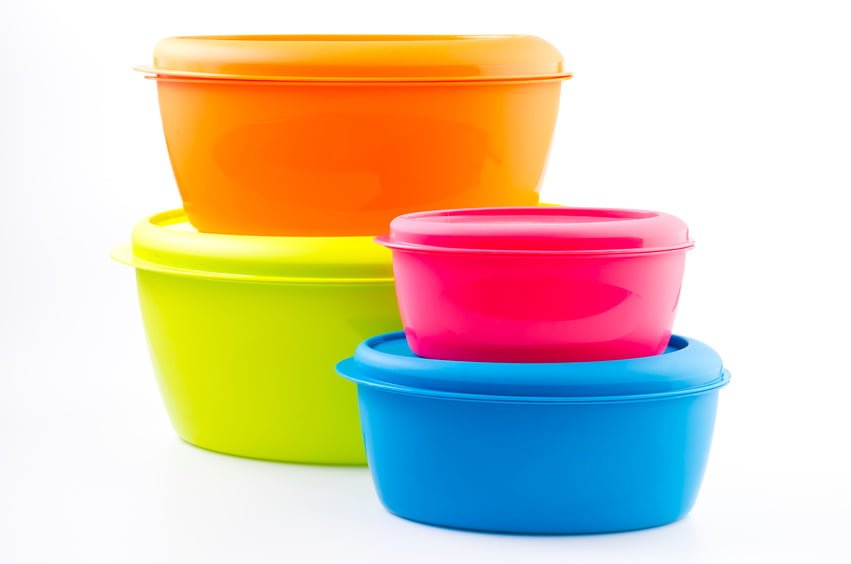
The food is ready, so let’s starts wrapping. This is a very important step if you don’t want crushed, soggy food – in other words, not very appetizing! We suggest using small, well-wrapped lunch containers. They pack well in the cooler and will make sure that everything is perfect when you get there.
First, put the sandwiches, salads, snacks and desserts in hermetically-sealed containers. They’ll ensure a messless meal. Avoid Ziploc-type plastic bags because they’ll make your sandwiches soft and soggy. If you’re thinking of bringing back the leftovers, pack extra containers.
Next, we suggest bringing a serving tray if you’ll be eating on the ground. They’ll stabilize your plates and you’ll be able to put your food and drinks on them.
Finally, there are knapsacks made specifically for picnics. As well as being cute, they have everything you’ll need for a meal on the grass. It’s a little kit has everything including salt and pepper shakers.
Disappointed by your wicker basket? Smile because you can still use it for things that don’t require refrigeration like nuts, dried fruits, etc.
To learn everything about what to put in your cooler, bag or basket, check out our picnic checklist. You won’t forget anything!
Plan your picnic in 3 steps
To do the night before |
|
To do the day of |
|
To do when you get there |
|
Respect the 11 golden rules for the cooler
Whether it’s a picnic in the sun on the beach or under a shady tree in the park, you can’t get away with not having a good cooler. In the summer under the hot sun, food must be kept cool to avoid getting sick from improper food handling.
At first glance, you think you can prepare your cooler with your eyes closed, but don’t be fooled. It’s not necessarily that easy. There are rules that must be respected to ensure that your outdoor meal doesn’t turn sour.
For a hassle-free picnic, don’t wait to adopt these safe, hygienic practices that you should do all summer long!
Choose a hard cooler
Hard plastic coolers keep food cold longer than soft, lunch bags. As they get pretty heavy, transport them in a stroller or wagon!
Refrigerate your food in advance
Put your food and drinks in the fridge the night before so your treats stay cold longer.
Small tip: Cool your cooler by filling it with ice a few hours before adding the food.
Double up on safety by using two coolers
If it’s possible, use two coolers: one for the food and drinks you’ll access more frequently and another for meats, dairy products, sandwiches, salads, etc. This way you always won’t be opening up the meat cooler and avoid warming up the meat.
If you only have one cooler, then put the drinks at the bottom so they’ll stay cooler longer and won’t crush your other food.
Ice packs, ice packs, ice packs
For optimal preservation of food, use ice or gel packs. They last twice as long as ice and form less water at the bottom of the cooler. It’s better to put them on top of food and in between perishables.
Did you know that using ice cubes can transmit bacteria from one food to another through dripping? So be careful with this kind of ice. Put it in hermetically-sealed containers to avoid contamination.
Maintain proper temperature
Although you can’t control the temperature outside, you must always control it in the cooler, so always keep the cooler temperature at 4° C (40° F). Avoid the danger zone which is between 4° C and 60° C as this is the temperature zone when bacteria grows best.
If you plan on having several picnics throughout the summer, we suggest investing in a thermometer.
Remember that if you’re not sure, it’s better not to eat it and to just throw it out.
Close the gaps
Fill the little gaps with frozen water bottles for maximum freshness. You can drink them after.
Use storage techniques for food
Put food in the order you think you’ll eat it or by preference. Arrange the heaviest things at the bottom so as not to crush everything else.
Perishable food like meat must absolutely be put in first. Since heat rises and cold descends, they’ll keep better at the bottom of the cooler. As well, add a layer of ice packs before adding things like fruit, condiments, etc.
Because you’ll be eating your dessert last, think about putting it at the bottom of your cooler. Snacks and appetizers will be eaten before the main meal, so you’re better to put them on top.
Wrap raw meat separately
Raw meat and seafood must be put in sealed containers so they won’t leak and contaminate other food. Ideally, put them in another cooler, especially if you’re planning a bbq picnic where you’ll be using a lot of meat.
If you don’t have two coolers, put the meat at the bottom so it’ll stay nice and cold and won’t leak onto other food.
Keep an eye on the food that’s sensitive to the heat
Butter, mayonnaise, cheese, cream and yogurt are foods that break down in the heat. Put them at the bottom of the cooler and don’t leave them at room temperature for more than two hours.
Here is a list of foods that must be kept cold:
- Meat, chicken and fish.
- Cold cuts.
- Salads and mayonnaise-based sandwiches.
- Dairy products.
- Cream-based desserts, milk or yoghurt.
- Egg-based food (quiches, sandwiches and salads).
Fill the cooler right up
A full cooler conserves its temperature longer than a half empty one. In fact, the fuller it is, the closer together the foods are, so less air circulates and the cold is maintained!
Small tip: If your fridge is partially full, fill the space with more ice or frozen water bottles.
Protect your cooler
In the car, put the cooler in a cool spot. If you have air conditioning, put it on the back seat instead of the trunk.
When you get there, cover the cooler with a light-coloured blanket or put it under a tree or parasol. If it’s a picnic at the beach, dig a hole in the sand and put your cooler in it.
9 original tricks for your picnic

Photo credit : The Kailo Chic Blog, Flickr Bryan Ochalla, Buzzfeed, Greatist, The Kitchen Prep
For a fun and original picnic, there are many things that can add punch to your outdoor feast. In fact, you surely have things lying around the house! Here are our favourite ideas:
Muffin tins
Put fruit, veggies, crackers or other little nibblies in muffin tins. Cover with tinfoil for transport and unwrap for a little buffet.
Paper muffin cups
Serve drinks covered with paper muffin cups. This will keep bugs from floating in them.
Easter eggs
Reuse plastic Easter eggs as snack containers. Kids will love helping themselves.
Mason jars
Use mason jars as individual serving dishes for raw veggies. Put a dollop of dip at the bottom, then plant the veggies in it.
Egg cartons
Keep your egg cartons for food like plums, clementines and even mini muffins!
Homemade ice packs
Out of ice packs to keep your cooler cool? Don’t go running to the store for more when you can make them yourself! What could be cheaper and better for the environment? 🙂
The recipe: Pour dishwashing soap into a doubled Ziploc bag and put in the freezer. Otherwise, put a wet sponge in a Ziploc bag and put it in the fridge.
Then you can use the sponge or soap to wipe up any picnic messes.
Shower curtain
Put a shower curtain under your tablecloth to prevent moisture.
Lime
Fight mosquitos and other bugs with the lime technique. Just cut a lime in half and poke cloves into the pulp. Grandma’s trick will surely keep the bugs away!
Contemporary salad
Cook your salads in a pot. Even prepared in advanced, they’ll still be crunchy! Layer flavours to create different combinations of salads.
So you’re now well-versed in the art of picnicking. Whether it’s how to choose a menu, cooler or destination, going on a picnic requires a minimum of prep work to ensure a memorable day. And eating outdoors always inspires spontaneity and little adventures that will make your picnic a marvellous summer memory!
Now it’s your turn to tell us about your best picnic moments. What were the best meals you’ve enjoyed on the grass?




